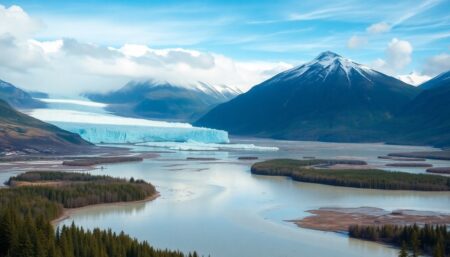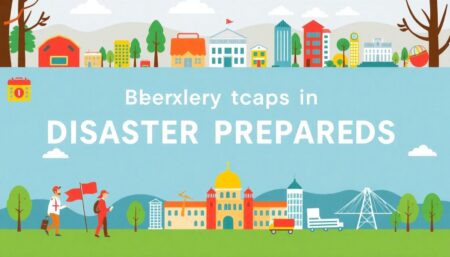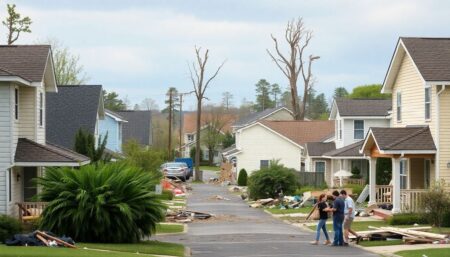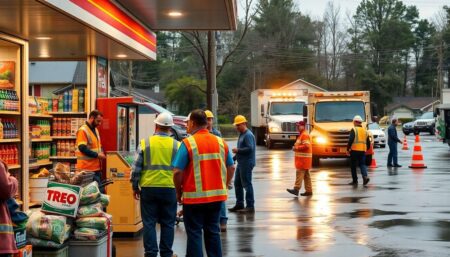Welcome to our in-depth exploration of the Indian Ocean tsunami, a catastrophic event that forever changed the lives of millions. Join us as we delve into the past, uncovering the profound impact of this natural disaster and the lessons learned in its wake.
Reflecting on the devastation and the global response to one of the deadliest natural disasters in recent history.
Imagine an image that begins with a seemingly endless expanse of the Indian Ocean, suddenly interrupted by a menacing wall of water. This is no ordinary wave; it is a colossal beast, towering several stories high, stretching as far as the eye can see. The wave barrels towards the shore, a churning, frothing monster of pure destruction, unlike anything ever witnessed.
As the tsunami strikes the coast, it engulfs everything in its path. Palm trees, buildings, cars—all are but mere playthings for the raging surge. Waves claw at the shores of coastal towns, swallowing them whole, leaving behind a chaotic mix of debris and despair.
In the aftermath, the once vibrant coastal landscapes are rendered unrecognizable. Boats lie strewn inland, homes are reduced to matchsticks, and the usually bustling streets are now eerily silent, covered in a thick layer of muck and detritus. The immense scale of the devastation is overwhelming, a stark reminder of nature’s raw, unpredictable power.
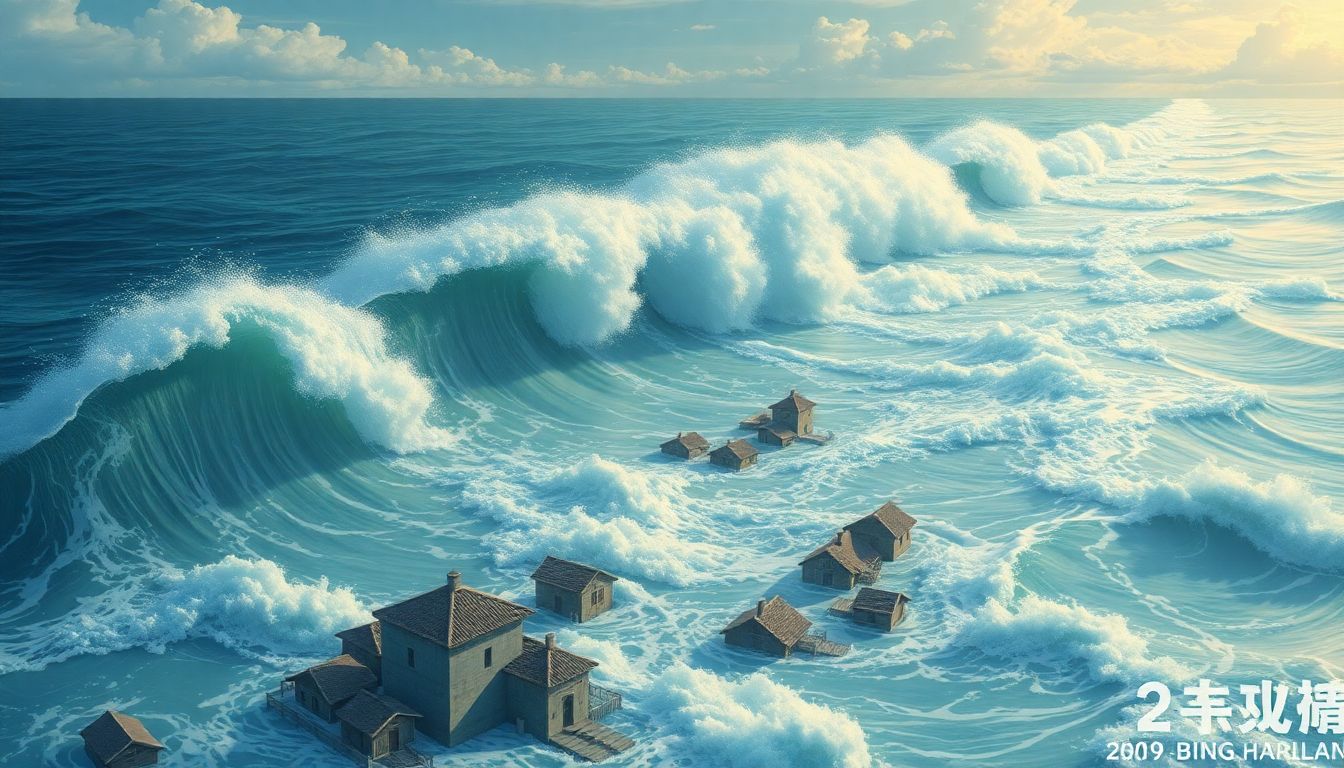
The Day the Waves Came
In the early hours of December 26, 2004, the world awoke to one of the most catastrophic natural disasters in recorded history. At 00:58:53 UTC, a colossal earthquake struck underwater, off the west coast of Sumatra, Indonesia. With a magnitude of 9.1-9.3 on the Richter scale, it was the third-largest earthquake ever recorded, and the largest since the 1964 Alaska earthquake. The quake, caused by the sudden movement of the Indian Plate beneath the Burma Plate, triggered a series of devastating tsunamis that would leave an indelible mark on the region and the world.
The tsunamis, generated by the massive displacement of water, radiated outwards from the epicenter like ripples in a pond, but with far deadlier consequences. The waves, reaching heights of up to 30 meters (100 feet), struck the coasts of 14 countries, with Indonesia, Sri Lanka, India, and Thailand being the hardest hit. The tsunamis traveled at speeds of up to 800 kilometers per hour (500 miles per hour), catching many communities off guard and leaving little time for evacuation.
The immediate impact of the tsunamis was nothing short of cataclysmic. Entire communities were washed away, and the tsunami inundated the coastal regions of the Indian Ocean which left millions of people displaced. The event was unprecedented in living memory, and the world watched in horror as the death toll rose to a staggering 230,000 people across the affected countries.
- In Indonesia alone, over 130,000 people lost their lives, with the province of Aceh being the worst affected.
- Sri Lanka reported over 35,000 fatalities, with the eastern and southern coasts bearing the brunt of the tsunami’s fury.
- In India, over 10,000 people perished, particularly in the state of Tamil Nadu.
- Thailand saw more than 5,000 fatalities, with the popular tourist destination of Phuket being severely impacted.
The sheer scale of the disaster made it difficult for relief efforts to reach those in need. Infrastructure was decimated, with roads, bridges, and communication networks destroyed. Hospitals were overwhelmed, and the risk of disease outbreaks due to contaminated water and unsanitary conditions became a major concern. The United Nations launched a massive humanitarian effort, appealing for aid from the international community. The world responded with an outpouring of support, pledging billions of dollars in aid and dispatching emergency response teams to the region.

The Aftermath: Loss and Resilience
In the aftermath of the disaster, the human toll was immense and heart-wrenching. Lives were lost, and countless individuals were injured, leaving families shattered and communities in mourning. The sheer scale of the devastation was overwhelming, with homes flattened, businesses destroyed, and infrastructure reduced to rubble. The once-thriving landscapes were replaced by scenes of desolation, as the disaster indiscriminately tore through neighborhoods, leaving a trail of destruction in its wake.
The destruction of communities was not merely physical; it was emotional and psychological as well. Families were uprooted, and long-established neighborhoods were fragmented. The sense of loss was palpable—loss of life, loss of livelihood, and loss of the familiar. Schools, places of worship, and community centers that once served as the heart of these areas were reduced to mere memories, adding to the collective grief. The disaster not only changed the landscape but also altered the very fabric of these communities, challenging their identity and cohesion.
Yet, amidst the chaos and despair, stories of survival began to emerge. Tales of heroism and selflessness surfaced, as ordinary people performed extraordinary acts to save others. Neighbors helped neighbors, strangers became friends, and first responders worked tirelessly to rescue those in need. These stories served as beacons of hope, reminding everyone that even in the darkest hours, the human spirit remains indomitable.
The road to recovery was long and arduous, but the spirit of resilience was evident in every corner. Communities came together to rebuild, determined to rise from the ashes. Support poured in from around the world, offering a lifeline to those affected. Slowly but surely, the sounds of reconstruction filled the air, and the landscape began to change once again. New homes were built, businesses reopened, and the rhythm of daily life started to return. The disaster had left its mark, but it also revealed the strength and resilience of the human spirit, proving that even in the face of overwhelming adversity, people can come together to rebuild and thrive.
- Community gatherings and memorials were organized to honor the lost and celebrate the survivors.
- Volunteers from all walks of life dedicated their time and resources to aid in the recovery efforts.
- Government agencies and non-profit organizations worked hand in hand to provide essential services and support.
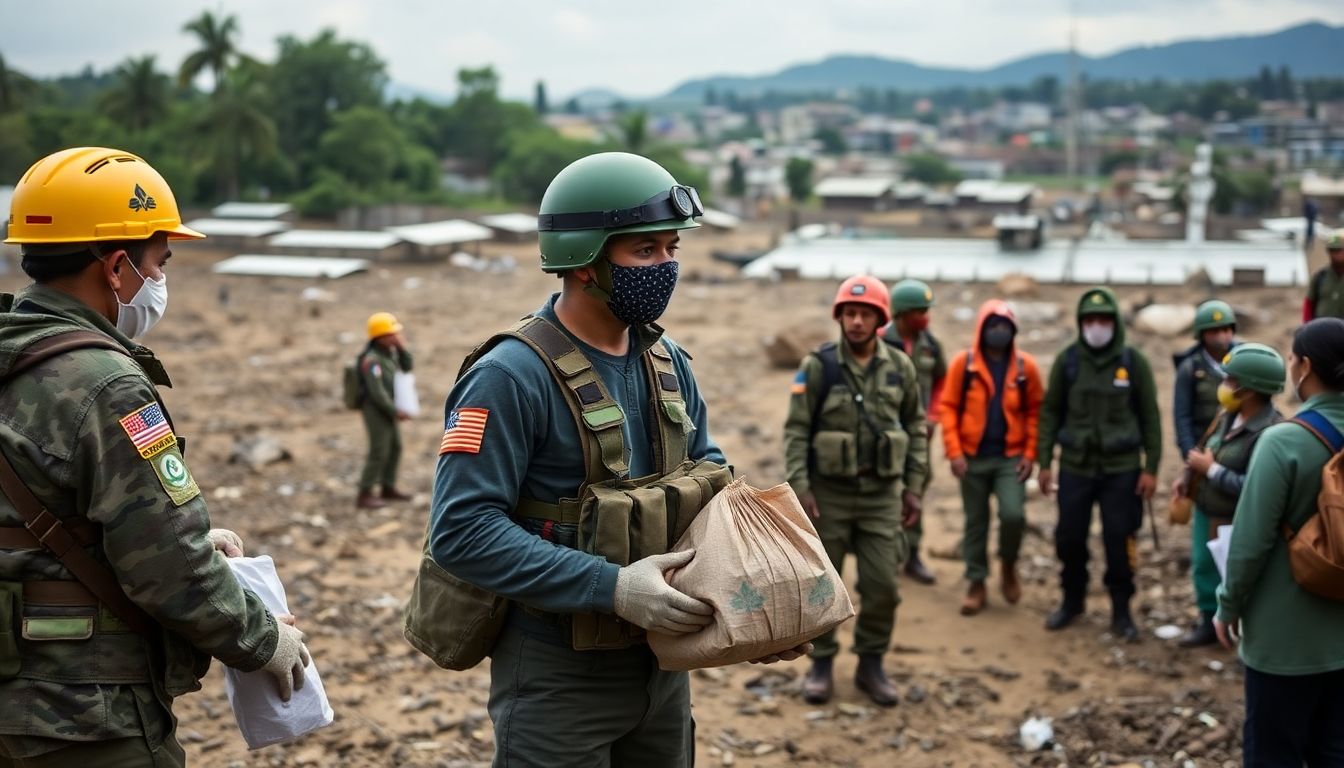
The Global Response: Aid and Geopolitics
International aid efforts in response to global crises have increasingly become a complex interplay of humanitarianism, politics, and strategy. When disaster strikes or conflict erupts, the global community springs into action, mobilizing resources to provide relief and support. The United Nations (UN), along with its various agencies, often takes the lead, coordinating emergency responses and channeling funds from donor countries. Alongside the UN, a plethora of Non-Governmental Organizations (NGOs) like the Red Cross, Oxfam, and Médecins Sans Frontières (MSF) work tirelessly on the ground, delivering essential services such as medical care, food, water, and shelter.
The role of governments in aid efforts is multifaceted, ranging from financial contributions to logistical support and diplomatic intervention. Donor governments, such as those in the European Union and North America, allocate significant portions of their budgets to international aid, reflecting their commitment to global stability and development. Meanwhile, recipient governments play a crucial role in facilitating the distribution of aid, ensuring that it reaches those most in need. However, government involvement can be a double-edged sword, as political agendas and bureaucratic hurdles can sometimes hinder the effectiveness of aid delivery.
NGOs, on the other hand, often have the advantage of flexibility and grassroots reach. They can access remote or conflict-ridden areas where government presence is minimal, providing lifesaving assistance and advocating for the rights of affected populations. Yet, NGOs also face challenges, including:
- Funding constraints: Securing consistent and sufficient funding is a constant struggle for many NGOs.
- Safety concerns: Operating in volatile environments exposes aid workers to significant risks.
- Coordination issues: Ensuring effective coordination among various actors on the ground can be complex and challenging.
Geopolitical interests significantly influence the response to international crises, shaping the priorities and strategies of aid efforts. Donor countries may channel aid to align with their foreign policy objectives, such as promoting regional stability, countering extremism, or enhancing their global influence. For instance, the United States’ aid strategy in Afghanistan and Iraq has been heavily influenced by its security interests in the region. Similarly, China’s increasing role in African development reflects its economic and political ambitions. While geopolitical considerations can drive substantial investment in aid, they can also lead to imbalances in global response, with some crises receiving disproportionate attention and resources at the expense of others.
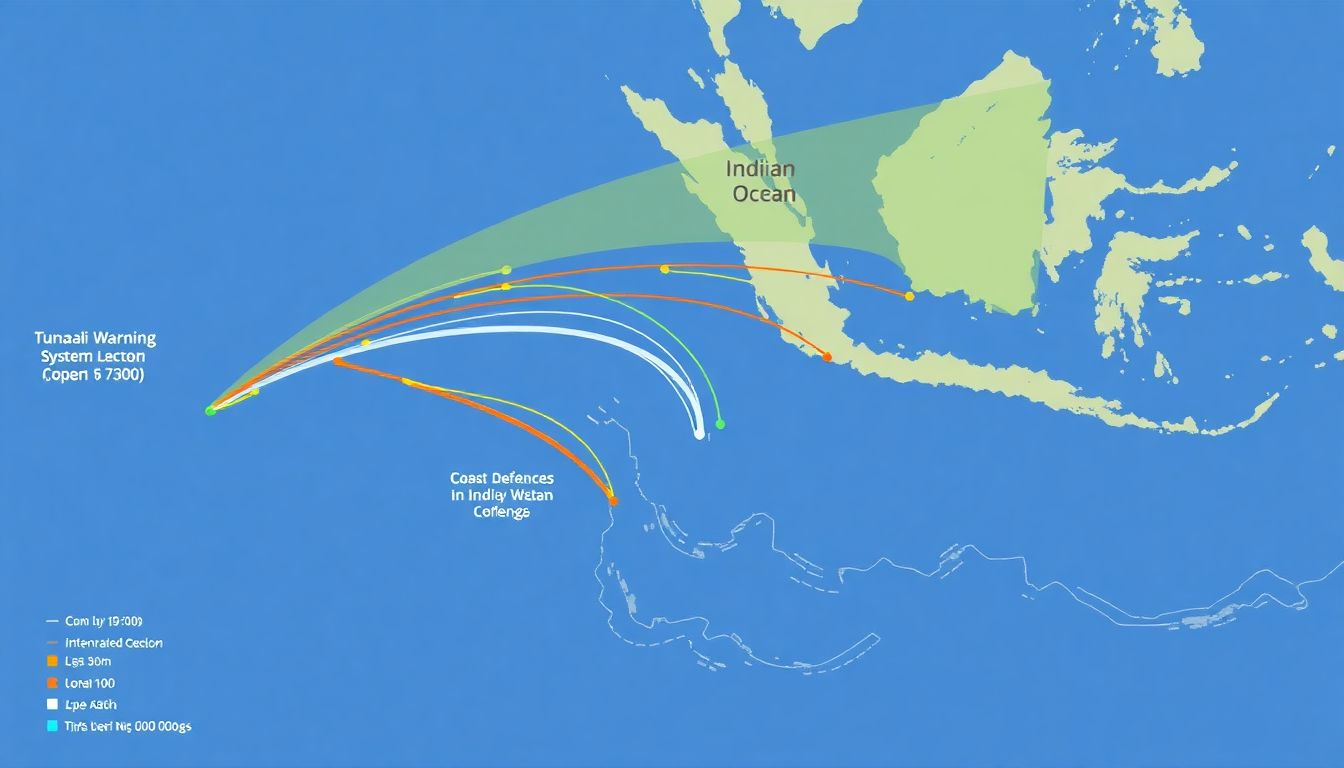
Lessons Learned and the Road Ahead
The tsunami of 2004 in the Indian Ocean, one of the deadliest natural disasters in history, served as a stark reminder of nature’s unpredictable power and a call to action for improved disaster preparedness. The catastrophic event highlighted critical gaps in early warning systems, inter-agency communication, and public awareness. The absence of a comprehensive alert network in the Indian Ocean region, coupled with a lack of understanding about tsunami risks, exacerbated the devastation. Among the key lessons learned was the necessity of rapid and reliable information dissemination, coordinated emergency response protocols, and robust public education initiatives. Governments, NGOs, and international organizations have since collaborated to address these deficiencies, resulting in significant strides in tsunami preparedness.
In the aftermath of the 2004 tsunami, substantial improvements have been made to tsunami warning systems, particularly in the Indian Ocean region. The Indian Ocean Tsunami Warning and Mitigation System (IOTWMS) was established in 2005 to provide early warnings to member countries. This system, comprising a network of seismic and sea-level monitoring stations, enables real-time data sharing and rapid alerts. Additionally, countries have invested in infrastructure upgrades, including the installation of coastal sirens and the development of evacuation routes. Public awareness campaigns, such as community-based training and tsunami drills, have empowered local communities to respond effectively during emergencies. These enhancements reflect a proactive approach to disaster management, prioritizing early detection, efficient communication, and community engagement.
Despite these advancements, preparing for future disasters remains a complex and ongoing challenge. Several issues persist, including the need for:
- Enhanced technological capabilities to better predict tsunami behavior and impact;
- Integration of local knowledge and traditional practices with modern scientific methods;
- Strengthened regional cooperation to share best practices and resources;
- Addressing the unique vulnerabilities of low-lying islands and densely populated coastal areas.
Looking ahead, the global community must maintain a commitment to continuous improvement and innovation in disaster preparedness. This includes investing in research and development for cutting-edge technologies, fostering international collaboration, and promoting a culture of resilience. By addressing these ongoing challenges and building upon the lessons learned from past events, we can work towards minimizing the impact of future disasters and safeguarding our communities from the ever-present risks of tsunamis and other natural hazards.
FAQ
What caused the 2004 Indian Ocean tsunami?
Which countries were most affected by the tsunami?
How did the international community respond to the disaster?
What improvements have been made in tsunami warning systems since 2004?
How can communities better prepare for future tsunamis?
- Invest in robust tsunami warning systems and infrastructure.
- Educate coastal communities on tsunami safety and evacuation procedures.
- Build and maintain coastal defenses and protected shelters.
- Address the impacts of climate change on coastal vulnerability.




